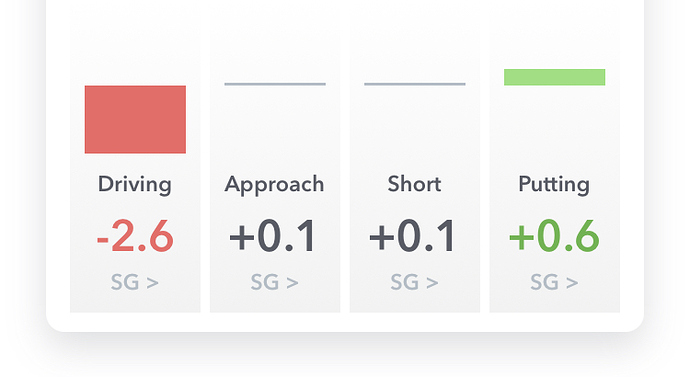Um, how slow is “slow”? How short is short? Is ‘slow’ at least ‘controlled’? As to how to overcome your mental block, I’d ask your instructor for advice.
I am in a bit of a similar boat. I’m not very flexible, but when I get a full turn, get my weight back to my front, and whip the shoulders through, I can smack it a good 260-270 carry or so. (At least it looks that way, the third of the time I can even reacquire my ball sailing through the air. It’s really frustrating hitting balls, keeping my head naturally still, behind the ball, and completely losing sight of the %@#*! OTOH, maybe I’m hitting it even farther?)
Anyway, that’s if I catch it cleanly, and I usually don’t. Conversely, I take a nice, easy, 'feels like 1/2, but is actually (when I look in a mirror) an 80% swing, I make consistent, easy contact, but the ball only goes 220-230. I feel like I should be satisfied with the 225, and play old fart golf, but that feels like quitting.
And it frankly isn’t as aesthetically appealing—I play this game to watch a white sphere get really small, really fast, with feeling like hardly any effort at all. So, I advise asking your pro.
Personally, as someone who used to contend with a monster moonshot slice, both see a pro for advice concerning your driver swing, and the damned thing can go away with practice. Adam Young’s, ‘Visualize you trying to drive a nail in the right rear quarter of the ball, with your driver as the hammer’, was helpful for me to start an inside to out downswing path. Consult the new ball flight laws, and figure out how they’re applying to your swing and ball flight.
‘Dry-firing’—just getting on some flat ground, with a bare tee, and my driver, and trying to swing as $%*#@ fast as I could while keeping my other fundamentals intact, and while trying to clip the tee—has been helpful for me. You at least, have a launch monitor; I’m trying to do this by timing the greatest ‘Whoosh!’ sound, with the click of club head meets tee. And then trying to remember how that felt, then duplicating it. No ball, therefore no beating myself up after the inevitable moonshot slice.
Ultimately, I’m trying to get to where this speed, weight shift, hip turn, inside to out hammering the ball: is all unconscious. Then, I can step back in, watch the back of the ball as I’m ‘staying behind it’, staying within myself and launching that sucker. At least my slice has gone away.
EDIT: And if it becomes unconscious, then it’s your body steering it—which works really well, it’s how we walk, drive cars, eat, etc—and not your conscious mind, which tends to screw it up.
Take some ‘speed swings’ at the range/net with the clubs that are giving you issues. With, and without a ball. With a ball, figure out why the ball is doing what it’s doing: over the top, late weight shift, casting, whatever. Then try to visualize a strike that counteracts the motion you don’t want, and still keep swinging fast.


